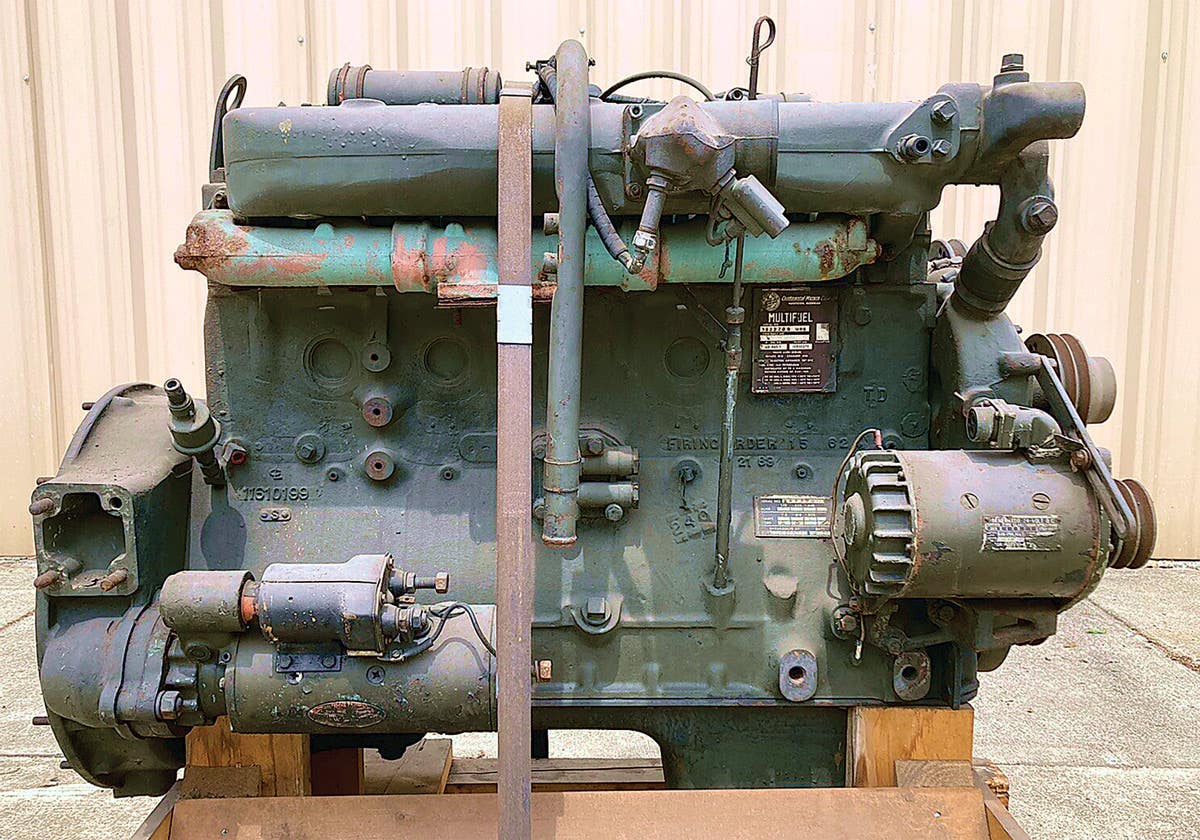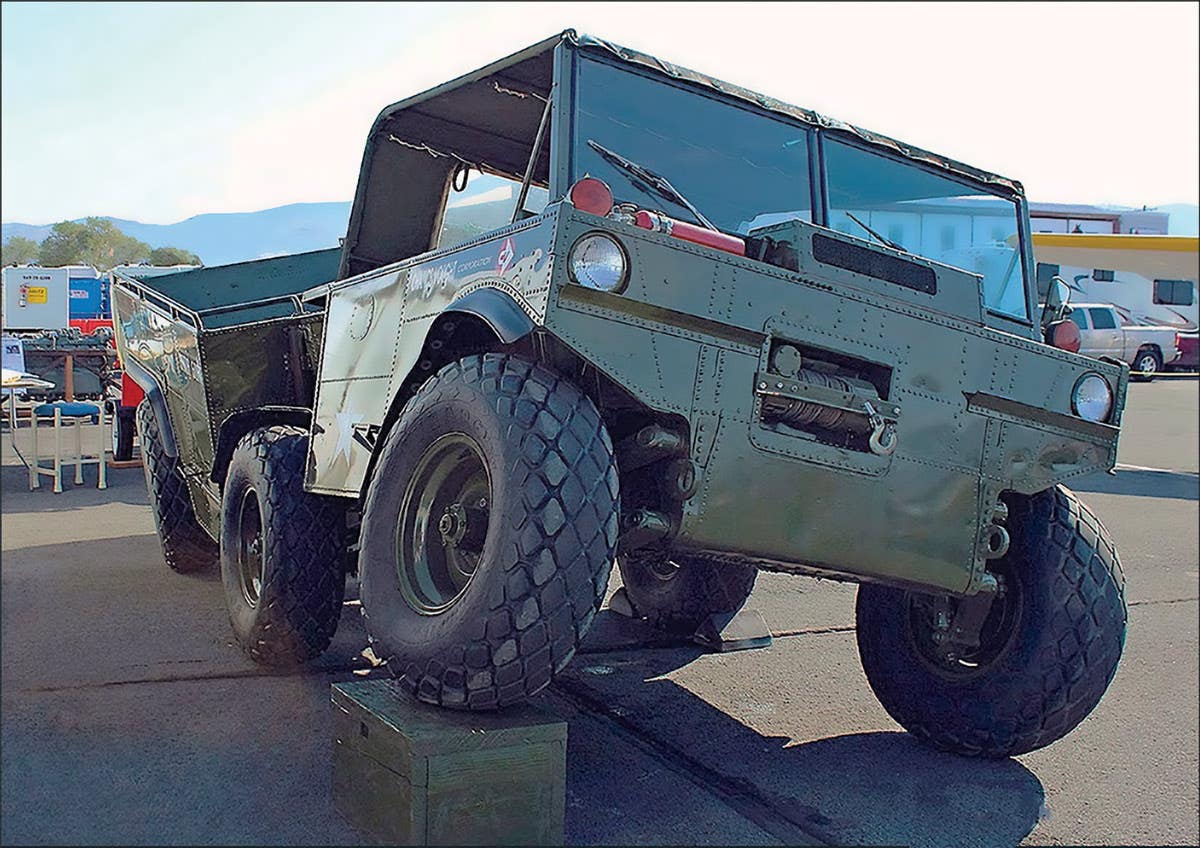Don’t batter your battery
A guide to keeping your vehicle’s battery in tip-top shape
Until the early 1920s, most cars, trucks and military vehicles had magneto ignition systems. Since a magneto is a self-contained device that functions as a distributor while generating its own electricity, most vehicles didn’t have batteries, and their engines were started by a hand crank, though some vehicles had small dry-cell batteries that supplied power to the ignition system for start-up. Many farm tractors and construction machinery retained a no-battery magneto system well into the 1930s. It was also favored in light aircraft because there was no extra weight of an electric starter, a battery, and a generator to keep the battery charged, and the engines were started by pulling-over the propeller by hand.
Even when many cars and trucks were fitted with electric starters and lights, they often retained magneto ignition systems. A magneto is more efficient than battery ignition because its voltage increases with engine RPM, and engines need more voltage at the spark plugs at higher RPMs. On the other hand, most battery-ignition systems peak at a certain RPM range. However, since most vehicles now had lead-acid wet-cell batteries to power their electric starters and lights, as well as generators to keep the batteries charged, a self-contained magneto ignition was no longer necessary and was discarded in favor of the battery-ignition system.
The term, “battery ignition,” is a bit misleading because the battery usually only supplies power to a vehicle’s ignition and electrical system until the engine is turning fast enough for the generator or alternator to provide the power. Likewise, when a vehicle is being driven, it’s usually the generator or alternator that supplies all the power for the ignition system as well as accessories such as lights, radio, heater, etc.
For most vehicles built before computerization, a battery is only required to start the engine and provide power for lights and other accessories when the engine isn’t running. When you’re cruising along in your MB, M151, M37, M211, or HMMWV, you’re running on generator or alternator power, not battery power. However, if the generator or alternator should fail, you can still go quite a few miles with only the battery powering the ignition system — assuming you aren’t also using accessories such as headlights or heater.
Lead-acid wet-cell batteries haven’t changed much since they were first used to power telegraph systems in the 1800s. Each cell of a battery produces 2 volts. Therefore, a 6-volt battery has three cells, which means three caps where one checks and adds water, and 12-volt batteries have six cells. While there are special-purpose batteries, such as 8-volt batteries (which have four cells and caps), higher voltage requirements in vehicles, aircraft, and marine applications are usually met by connecting two or more batteries in series rather than manufacturing batteries with more cells. This is apparent in many HMVs, where most M-series vehicles have two 12-volt batteries connected in series to produce 24 volts.
Voltage and amperage are two different things. One might say that voltage is potential power, while amperage is useful power. There can be very high voltage, such as in most vehicle ignition systems, yet the amperage is low. This is why getting bitten by a spark plug wire makes you jump, but doesn’t put you 6 feet under. On the other hand, there can be very low voltage but high amperage, which is why a wrench can be melted if accidentally dropped between the terminals of a 6-volt battery.
Amperage can be increased by connecting batteries in parallel. For example, if you have a boat with a 12-volt electric trolling motor and connect two 12-volt batteries in parallel, you will be able to go farther before the batteries run down. On the other hand, connecting the same two batteries in series produces 24 volts, and one will be able to go faster, though not as far.
Batteries seem to be some of the most misunderstood and neglected components of collector or hobbyist military vehicles, no matter if the vehicle is fully restored or just used for work or recreation. Though it might seem ironic, batteries in most common hobbyist HMVs are usually performing severe service. Batteries are often blamed for every vehicular electrical problem from slow or difficult engine starting, to headlights that only burn as bright as birthday candles. However, these problems are more often caused by dirty, loose or corroded connections and wiring. Just as often, while the battery may indeed be low — meaning not fully charged — it’s not because there is anything wrong with the battery, except that its owner didn’t properly service and maintain it. Knowing how to care for your vehicle’s batteries will usually save you money, time, and a lot of frustration.
Let’s begin at the beginning, which is buying a new battery for your HMV. If you have an M-series vehicle with two 12-volt batteries, it’s wise to replace both batteries at the same time. It’s also important that both batteries be the same size and type and preferably by the same manufacturer. In the case of two 12-volt batteries connected in series, both should be about equal in age and condition as well as size and type. If only one battery is replaced, you will probably end up replacing both sooner than if you had replaced them both to begin with. There are technical explanations for this, but I’ve found it to be true from experience.
The useful life of vehicle batteries varies a lot, though their average dependable lifespan is 3-5 years. Dependable means they’re batteries you can trust to start your vehicle in extreme conditions of heat, cold and wet weather, and after long periods of starter cranking. Just how long a battery will remain trustworthy is dependent upon many factors. A prime factor is the quality of the battery to begin with. Other factors include the type of service and, as already stated, most HMV applications should be regarded as severe service. Then there is extreme heat or cold. Most batteries last longer in cold environments than in hot desert conditions. Of course, a lot also depends upon how and where the vehicle is used. Shock and vibration on the highway can shorten battery life by shaking it apart inside. Off-road use is even harder on batteries for the same reason. The effects of shock and vibration can be lessened by placing a rubber pad under the battery, and likewise padding its hold-down device. If stock appearance is important, it usually doesn’t take much ingenuity to hide such padding from all but the most critical eyes, or make removable when the vehicle is displayed.
Another negative factor common to many hobbyist HMVs is a slow-starting engine -— usually because the vehicle sits for long periods — where a battery is often run low. This problem is compounded if the battery is not fully recharged. An example is a vehicle that sits most of the time so it doesn’t start easily, and then is not driven very far. A properly functioning generator or alternator and charging system will always fully recharge a vehicle’s battery… but only if the vehicle is driven far enough or its engine is run long enough. If not, one has a case of insufficient income where more goes out than comes in, until one is broke… and the battery is dead.
While using a constant-voltage type charger or battery maintainer is a good idea for HMVs that sit a lot, a battery is meant to be cycled... meaning discharged and then recharged. Most batteries will last longer if properly cycled than if simply kept on a charger.
Unless you have a fully restored vintage HMV, or a time-period vehicle where the type and appearance of a battery is important, there is usually a wide range of battery choices, including price. In regard to vintage HMVs, how important it is that a battery looks correct is entirely up to you. While a modern smooth-top plastic-cased 6 volt battery does look out of place in a 1942 Ford GPW, there are reproduction batteries that look like the original “tar-tops” with external cell connectors and hard-rubber cases. Likewise, one might not want a shiny new set of today’s auto-mart type batteries in their Vietnam-era M35.
Again, just how correct to be when it comes to HMV batteries is entirely up to the owner. If one drives their vehicle a lot and only displays it occasionally at shows and events, one might find an old correct type battery that could be cleaned up and installed just for show. These display batteries would be convenient and safe because they would not need to be filled with acid. Such vintage batteries can still be found at older car and truck wrecking yards; and products such as Armor-All work well in restoring aged hard-rubber cases and old plastic cell caps.
In regard to price, most cheap batteries don’t last long beyond their warranties, while more expensive batteries may outlast their warranties by several years. I’ve found that cheap batteries with only a one-year guarantee usually only last about two years, while batteries costing only about twenty dollars more with two-year guarantees often last from five to seven years… if properly cared-for. As a general rule, one usually gets what one pays for when it comes to vehicle batteries, though the difference in price is often not much, especially if one takes the time to shop around. Spending twenty dollars more for the biggest and best battery for your application might save you money in the long run, since a top-quality battery may outlast two cheapies. A large good-quality battery may also save you the price of a towing bill, jump-start service, or an off-road rescue by being strong enough to start your vehicle in extreme conditions… or if you forgot to turn off your lights.
While an old battery may still start your vehicle and appear to be strong, it might not have enough reserve power for long periods of starter cranking. In other words, it’s no longer trustworthy. While there are ways to test batteries, most of these tests only give a general idea of a battery’s condition. If one has any doubts about a battery’s condition, and/or the warranty period has been exceeded, one should consider replacement if the vehicle is going on a long road trip or out into the bush.
What are warning signs that a battery is no longer trustworthy? These warnings are often hard to spot in a vehicle that’s well cared-for and driven frequently, but here’s an example of one I encountered with my 1965 Nissan Patrol. I keep the engine well-tuned, and it always starts easily; I check the battery water level often, as well as keep all the cable connections clean and tight. The warning of pending battery failure came one morning I flooded the engine so it didn’t start instantly like it usually does. Then, after a few more cranks, the starter slowed way down... something it never did before. Since I knew that all the connections were clean and tight, the battery was full of water, and the alternator had always been properly charging, this just about eliminated everything but the battery itself, which was almost seven years old.
The point to stress is that I knew everything else in the electrical system was okay. The alternator had always been charging, as indicated by the ammeter, the battery was full of water (electrolyte), its cables and connections were clean and tight, and the engine had always started easily. I also knew how old the battery was. I might have gotten six more months of use out of it, but I would not have been able to trust it to start my truck in any situation that required a lot of cranking, such as cold or wet days, or if I ran out of gas.
What about those potions offered online and in auto stores that claim to rejuvenate old batteries? Not surprisingly, most battery manufacturers advise against using them. When I was a kid working in my dad’s scrap yard, one of my jobs was to take old batteries, turn them upside-down, whack the bottom a few times with a stick, drain out all the old electrolyte, flush the cells with tap water, refill the battery with new electrolyte and put it on a trickle charger for a few days. These batteries often lasted another year or more, but I don’t recommend doing this.
Bottom line: the price of a top-quality battery is still usually less than a road-service call or a towing bill. Therefore, does it make sense to try to squeeze an extra year out of a battery you can’t trust?
On the other hand, thousands of perfectly good batteries are replaced every year because they’re thought to be the cause of hard-starting or electrical problems when the actual cause is something as simple as loose or dirty terminal connections. Look at your battery cable clamps for gray or white fuzz or corrosion every time you open the vehicle’s hood, and make sure the clamps are tight by trying to move them by hand. If the battery or batteries are located in another location, check the same things at least once a month. Corrosion can form out of sight between the battery post and the cable clamp. This is usually a kind of hard glaze that has to be scraped or wire-brushed away, so remove the clamps occasionally to check for this. While there are various products to spray on or apply to battery clamps to prevent corrosion, wheel bearing grease seems to work just as well.
Also check the battery cables for tightness where they connect to the starter, starter switch, solenoid, engine bock, or vehicle frame. The negative, or ground cable, is just as important as the positive cable. Current has to get back to the battery just as efficiently as it left. If your vehicle has a ground cable or strap between the engine and frame, also check that for tightness.
Besides keeping all cables and connections clean and tight, one should remember that battery water evaporates whether or not a vehicle is used. Therefore, the cells should be checked frequently… at least once a week in hot, dry environments. Add distilled water whenever possible, but any water is better than letting the cells get low. Once the plates of a wet-cell battery are exposed to the air, they lose whatever percentage of power the exposed area produced. For example, if the plates in a battery cell are ten inches tall, and one inch of those plates is allowed to dry out, then that cell will lose ten percent of its power. This is a permanent loss, and adding more water will not restore it.
As far as harming your battery by adding something besides distilled water, studies have shown that if a battery was going to last five years, using water that was drinkable to humans would only shorten its life by about six months. Therefore, if you’re out in the desert and find your battery water low, you will “batter” the battery far less by adding water from your canteen than waiting until you can find distilled water. Of course, one can always carry some distilled water aboard their vehicle.
Batteries should be kept clean. Dust and dirt on a battery, usually building up because the case is oily or greasy, traps moisture and becomes a conductor of electricity. This can cause a battery to slowly leak current, which may cause it to appear weak or worn out even if it isn’t. A rag soaked in dishwashing liquid will clean a battery case of oil and grease. Then, a mix of baking soda and water will neutralize any acid on the top or outside of the case. Such a mix will also neutralize acid on the battery holder or box. Be sure not to let any of the soda and water get inside the battery, because it will also neutralize, or at least weaken, the electrolyte.
No matter how careful you think you are, when working around or cleaning your batteries never wear clothes you’d ever want to wear again. Immediately dispose of any rags or paper towels you have used. Rags with battery acid on them will rot anything they touch, and can turn a whole load of laundry into lace doilies. Disposable gloves are also nice when cleaning your batteries, and some people like to wear safety goggles.
By following these tips you should be able to tell with reasonable certainty whether or not it’s a “bad battery” next time your HMV won’t start.







